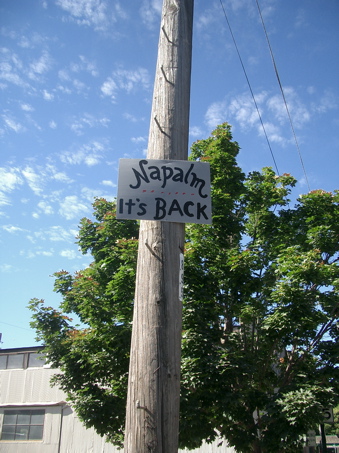The little I’ve known about the atomic bombings and Japan’s surrender goes like this: We dropped a bomb on Hiroshima on August 6. Then when that didn’t immediately produce the desired result, we dropped another one on Nagasaki — a secondary target since there was bad weather over the primary — on August 9. That was all the Japanese could take, and they surrendered August 15. I’ve never thought much about what happened in the days between the second bombing and the surrender, and always figured the U.S. government stood by as Japan came to its inevitable decision.
Of course, it didn’t happen that way. There was a war on, and it didn’t stop. Conventional bombing continued. We had a third atomic bomb ready to go. Richard Rhodes, in “The Making of the Atomic Bomb,” says that when the Japanese failed to move fast enough to surrender, President Truman ordered the Air Force to resume incendiary attacks on Japanese cities. The air commander in the Pacific, Gen. Hap Arnold:
“…still hoped to prove that his Air Force could win the war; he called for an all-out attack with every available B -29 and any other bombers in the Pacific theater and mustered more than a thousand aircraft. Twelve million pounds of high-explosive and incendiary bombs destroyed more than half of Kumagaya and a sixth of Isezaki, killing several thousand more Japanese, even as word of the Japanese surrender passed through Switzerland to Washington.”
I’d guess that one of the most unknown aspects of World War II for most Americans is the scale and destructiveness of the U.S. attacks on Japan’s cities, of which the raid August 14 was the last. A project called the National Security Archive just published a collection of documents on the development and use of the bomb. Among the papers are notes taken at an April 27,1945, meeting of the committee of military officers and Manhattan Project scientists assigned to come up with a list of targets for the bomb (Hiroshima was at the top of the list; from that day on, the city and everyone in it were under a death sentence). The notes include a plain-spoken description of the nature of the ongoing bombing campaign:
“It should be remembered that in our selection of any target, the 20th Air Force is operating primarily to laying waste all the main Japanese cities, and that they do not propose to save some important primary target for us if it interferes with the operation of the war from their point of view. Their existing procedure has been to bomb the hell out of Tokyo, bomb the aircraft, manufacturing and assembly plants, engine plants and in general paralyse the aircraft industry so as to eliminate opposition to the 20th Air Force operations. The 20th Air Force is systematically bombing out the following cities with the prime purpose in mind of not leaving one stone lying on another:
Tokyo, Yokohama, Nagoya, Osaka, Kyoto, Kobe, Yawata & Nagasaki.
“Colonel Fisher also advised that the 20th Air Force existing operational plans pointed toward dropping 100,000 tons of bombs on Japan per month by the end of 1945.”
I got to know one of the cities on that list, Nagoya, as an exchange student in the ’70s. Conscious as I was of the war and what it had done, despite the fact the city was all virtually new, it didn’t sink in what happened there. Later, I found a U.S. Air Force damage survey of the city, which I think had been home to close to 2 million people. The map showed a few small splotches of yellow — to denote undamaged areas — in a sea of gray. Ninety-five percent of the city had been destroyed.


